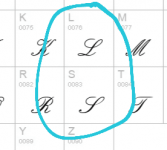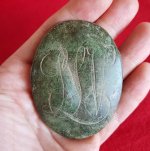Aureus
Silver Member
Had an awesome hunt on Saturday.
After a long wait ,got one of my major bucket listers : An engraved belt plate from the War of 1812
It's crazy how many times I imagined myself finding one and it finally happened on Saturday! Although I know it's going to be hard to ID this one, I couldn't be happier with its condition.
Although I know it's going to be hard to ID this one, I couldn't be happier with its condition.
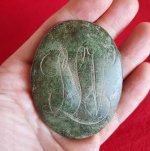
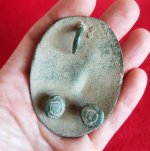
The letters seem to indicate L.S.V. and I suspect it belonged to a militia soldier. ( Loyal S.... Volunteers?)
An other great find an hour or so latter, was my best preserved Connecticut copper 1785 (Miller 6.4-I)
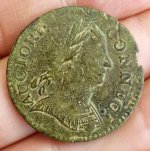
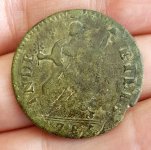
Couldn't be happier as both relics are top shelf finds but the belt plate,for me personally, takes the cake.
Thanks for the comments.
After a long wait ,got one of my major bucket listers : An engraved belt plate from the War of 1812
It's crazy how many times I imagined myself finding one and it finally happened on Saturday!
 Although I know it's going to be hard to ID this one, I couldn't be happier with its condition.
Although I know it's going to be hard to ID this one, I couldn't be happier with its condition. 

The letters seem to indicate L.S.V. and I suspect it belonged to a militia soldier. ( Loyal S.... Volunteers?)
An other great find an hour or so latter, was my best preserved Connecticut copper 1785 (Miller 6.4-I)


Couldn't be happier as both relics are top shelf finds but the belt plate,for me personally, takes the cake.
Thanks for the comments.
Last edited:
Upvote
104




